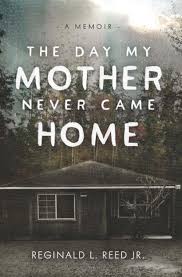Recently, the true crime genre has experienced a significant surge in popularity, captivating audiences with its nail-biting narratives of suspense and mystery. From bestselling books to binge-worthy documentaries and podcasts, true crime has become a true staple of pop culture, attracting millions of viewers and readers into the dark world of criminology. However, amidst the fascination with criminals, investigations, and courtroom dramas, there exists a troubling trend of negating victims — and particularly Black victims — and their loved ones from the narrative.
The fascination of true crime lies in its ability to unravel complex mysteries, dissect criminal behavior, and explore the intricacies of the criminal justice system. It offers a glimpse into the minds of perpetrators, the tireless work of law enforcement, and the pursuit of truth and justice. Yet, in this quest for storytelling, the voices and experiences of victims are often overshadowed, relegated to mere footnotes in a larger narrative focused on the sensationalism of crime, making it more attractive for the audience.
One of the most glaring aspects of this erasure is the disproportionate representation of victims based on race. Black victims of crime are frequently disregarded or marginalized in true crime storytelling, their stories minimized or sensationalized for dramatic effect. This racial disparity reflects broader societal biases and systemic inequalities that permeate our criminal justice system and media representations.
The erasure of Black victims in true crime narratives perpetuates harmful stereotypes and reinforces narratives that devalue Black lives. It sends a message that certain victims are deemed less worthy of attention, empathy, and justice, perpetuating a cycle of injustice and inequality.
I know this because my own mother was murdered when I was only 6 years old. Through my own journey of healing and advocacy, I have gained insights into the ways in which true crime storytelling can sustain harmful stereotypes and reinforce narratives that devalue Black lives. I have seen how certain victims are deemed less worthy of attention, empathy and justice, continuing a cycle of injustice and inequality.
Furthermore, the loved ones left behind by victims are often overlooked or sidelined in true crime narratives. Their grief, trauma and journeys for closure are reduced to brief mentions or dramatic reenactments; avoiding the depth and nuance they deserve. This erasure not only diminishes the human impact of crime but also perpetuates a lack of empathy and understanding for those truly affected by the tragedy.
Throughout the process of writing, I dive deep into the complexities of grief, trauma and the quest for closure that I experienced. I realized firsthand how true crime storytelling often overlooks the nuanced emotions and struggles of those left behind, opting instead for sensationalized dramatizations or superficial portrayals of the situation at hand.
By unfolding the details of my mother’s case and exploring the impact it had on my life, I sought to bring to light the human side of tragedy — the pain, the healing and the resilience of survivors. Through my writing, I aimed to challenge the narrative and advocate for a more empathetic and inclusive approach to true crime storytelling. My mother’s case became not just a personal tragedy but also a catalyst for promoting empathy, understanding and meaningful dialogue about the human toll of crime on families and communities.
To address these issues and bring about meaningful change in the true crime genre, it is essential to center the voices and experiences of victims and their loved ones. This includes amplifying diverse voices, particularly those of marginalized communities such as Black victims and their families. It requires inclusive storytelling practices, collaboration with community advocates, and platforms that prioritize diverse perspectives. Just Mercy by Bryan Stevenson is a great example. The book provides a powerful and poignant account of Stevenson’s work as a lawyer advocating for marginalized individuals, including Black defendants facing unjust sentences and death row inmates. It sheds light on systemic injustices and the human impact of the criminal justice system on individuals and communities.
Humanizing victims is another crucial aspect of challenging erasure in true crime narratives. Rather than sensationalizing crime scenes or focusing solely on the criminal’s perspective, true crime storytellers must humanize victims by exploring their lives, aspirations, and the impact of their loss on loved ones. This shift in storytelling priorities emphasizes empathy, dignity, and respect for victims and their families.
Additionally, challenging biases within true crime storytelling is essential. True crime consumers play a vital role in questioning narratives that marginalize victims and advocating for inclusive storytelling. By critically engaging with true crime content, audiences can contribute to a more equitable and compassionate portrayal of crime and its aftermath.
Supporting victim advocacy organizations and initiatives like the Innocence Project and the National Center for Victims of Crime is crucial in addressing the needs of victims and their families. Advocating for victim rights, access to resources and support services, and promoting systemic changes that prioritize justice and healing for all are essential steps in creating a more inclusive and empathetic true crime narrative.
By centering empathy, inclusion, and justice in true crime storytelling, we can strive towards a more compassionate and equitable representation of crime and its impact on individuals and communities involved.
***


















